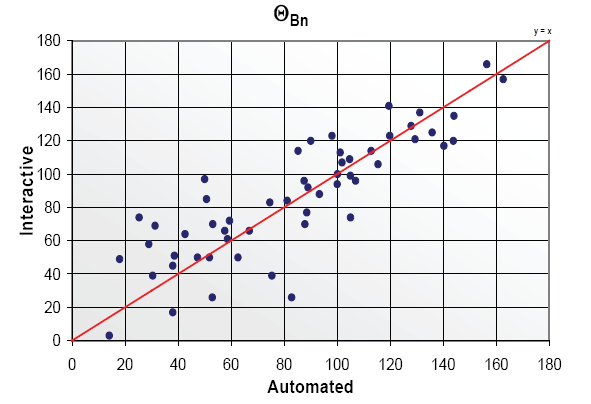
| ACE News Archives | ACE News #100 - September 19, 2006 |
Subscribe to ACE News |

The ACE real-time data stream provides web-based now-casting capabilities for solar wind conditions one hour upstream of Earth. A recent goal of the ACE team has been to provide an automated shock detection and analysis code that finds and analyzes interplanetary shocks as they occur for real-time application to space weather forecasting. Shock analysis algorithms based on the Rankine-Hugoniot jump conditions are in wide-spread use today for the interactive analysis of interplanetary shocks, yielding parameters such as shock speed, propagation direction, and shock strength in the form of compression ratios. The first obstacle to a fully automated analysis is event recognition. Following this, data point selection must also be automated and then a test is needed to reject those false candidates which do not sufficiently match the expected properties of shocks.
We have written a fully automated Rankine-Hugoniot analysis code that can scan the ACE science data, find shock candidates, analyze the events, obtain solutions in good agreement with those derived from interactive applications, and dismiss false positive shock candidates on the basis of whether mass, energy, and momentum are conserved. In this manner, shock recognition becomes a 3-step process with "tuned" selection conditions at the beginning and end. The intent is to make this code available to NOAA for use in real-time space weather applications. The code has the added advantage of being able to scan existing spacecraft data sets to provide shock solutions for use outside real-time applications and can easily be applied to science-quality data sets from other missions. Use of the code for this purpose is being explored.
We compare computed shock parameters like speed, normal vector, density, and magnetic field compressions, with solutions obtained interactively. The figure (top right) compares the computed angle between the upstream magnetic field and shock normal, ΘBn, for the 2 years 1999-2000 using the interactive approach (left axis) and automated analysis (bottom axis). The agreement is good and in some cases the automated solution is thought to be better than the interactive analysis.
Acceptance of shock solutions is a balance between passing false positive candidates and rejecting weak real shocks. For space weather applications we want as few false positive alarms as possible with a minimum number of missed real shocks. All "mistakes" should be weak and unimportant. In this example we use data containing 111 real shocks. The sensitivity of the automated shock finder was set to find 77 real shocks and 602 false positives. The conservation relation test passed 56 real shocks and 16 false positives, rejecting 586 false positives. Only 1 passed false positive event had a compression ratio greater than 2.5 and some passed false positives are now thought to be real subcritical shocks needing further examination. Approximately half of the "missed" real shocks have missing data, making analysis impossible. The remaining missed real shocks are weak with compression ratios less than 1.5 and do not generally constitute alarm conditions for space weather applications.
Contributed by Vasiliy Vorotnikov and Charles Smith of the University of New Hampshire, Qiang Hu of UC Riverside, Adam Szabo of Goddard Space Flight Center, Ruth Skoug of Los Alamos National Laboratory, and Christina Cohen of Caltech. Please direct questions or comments to
Last modified 19 Sep 2006, by